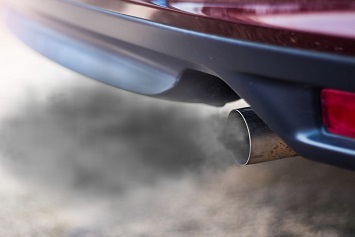With several minor exceptions, the EPA is proposing to grant each of the requests four small-volume manufacturers (SVM) made for alternative greenhouse gas (GHG) emissions standards for their light-duty vehicles.
Aston Martin, Ferrari, Lotus, and McLaren took advantage of a provision (40 CFR 86.1818-12(g)) contained in the Agency’s GHG vehicle emissions standards, which allows manufacturers with annual U.S. sales of fewer than 5,000 vehicles to petition the EPA for conditional exemptions from standards for manufacturers with larger sales. The proposed alternative standards apply to model years (MYs) 2017 to 2021. While the proposal includes alternative standards for Lotus, the Agency says that Lotus would be required to demonstrate that it will not exceed the 5,000-vehicle threshold for MY 2018 and beyond.
Emissions Averaging Difficult
The EPA introduced the SVM exemption in 2010 to provide some assurance that the GHG standards would not drive these manufacturers out of the U.S. market. The Agency noted that SVMs may face a greater challenge in meeting the carbon dioxide (CO2) emissions standards compared with large manufacturers because they produce only a few vehicle models, mostly focused on high-performance sports cars and luxury vehicles. SVMs have limited product lines across which to average emissions, and the few vehicles they produce often have very high CO2 levels on a per-vehicle basis. The EPA also noted that the total U.S. annual vehicle sales of SVMs are much less than 1% of total sales of all manufacturers and contribute minimally to total vehicular GHG emissions; foregone GHG reductions from SVMs likewise are a small percentage of total industrywide reductions. The EPA says it received only supportive public comments on allowing alternative standards for SVMs, including from SVMs, their trade associations, and dealers.
SVMs may apply for alternative standards for up to 5 MYs at a time. The companies may use the averaging, banking, and trading provisions to meet the alternative standards but may not trade credits to another manufacturer. The SVM exemption is conditioned on the manufacturer making a good-faith effort to obtain credits from larger-volume manufacturers.
Also, the MY 2017–2025 light-duty GHG program includes opportunities to generate air-conditioning and off-cycle emissions reduction credits that can be used as part of a manufacturer’s strategy in meeting standards. Each SVM provided the EPA with an estimate of its plans for use of air-conditioning and off-cycle credits in addition to their CO2 emissions.
Federal regulations for vehicles also include the National Highway Traffic Safety Administration’s (NHTSA) Corporate Average Fuel Economy (CAFE) standards. SVMs must separately petition the NHTSA for less stringent CAFE standards.
Submission Requirements
To qualify for the EPA’s conditional exemption, SVMs must provide the EPA with cost and technical information, including the CO2 reduction technologies used in the vehicles; an evaluation of comparable models from other manufacturers, including CO2 results; a discussion of the CO2-reducing technologies employed on vehicles offered outside of the U.S. market but not available in the United States, including a discussion as to why those vehicles and/or technologies are not being used to achieve CO2 reductions for vehicles in the U.S. market; and the most stringent CO2 level estimated to be feasible for each model, in each model year, and the technological basis for this estimate. The EPA notes that much of the data and information provided by the SVMs regarding future vehicles and technology projections are claimed as confidential and not included in the public versions of the applications.
3% Annual Reduction Required
The EPA’s standards are measured in grams of CO2 per mile (g/mile). Generally, the standards requested by the SVMs considerably exceed the Agency’s baseline standards. In a typical example, the EPA GHG standard for passenger cars for MY 2017 is 212 g/mile. The requested standards from the four SVMs for 2017 ranged from 372 g/mile to 431 g/mile.
For two SVMs— Ferrari and McLaren—the EPA slightly modified the requested standards for 2021 to reflect a 3% year-over-year emissions reduction.
“This approach would require Ferrari and McLaren to achieve a MY 2021 standard that is minimally more stringent than that requested by the manufacturers,” said the Agency. “The differences are small, 5 g/mile or less, and based on EPA’s review of the information provided by the manufacturers, EPA believes this additional emissions reduction can be achieved through the use of credits, including air conditioning and off-cycle credits, and the use of program flexibilities, including credit carryforward and credit carry-back within the lead-time available.”

